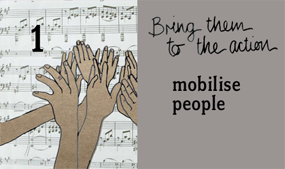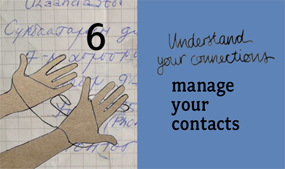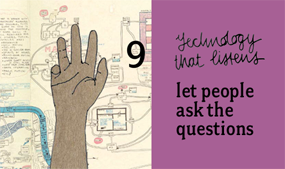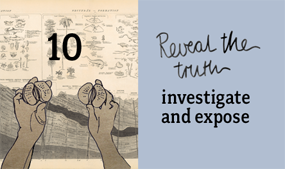Just six months after helping host the first screening in Mexico City of Tactical Tech's 10 Tactics video, the Miguel Agustín Pro Juárez Human Rights Centre (Centro Prodh) in Mexico has gone from having an old-fashioned, out-dated and rudimentary website, to producing podcasts, YouTube videos, video conferences and maintaining not just a website, but also a Facebook page and three Twitter feeds.
“The 10 Tactics video enriched a process that we as an organisation already had started,” said Quetzalcoatl Fontanot of Centro Prodh, who works with the media and public relations. “We already had detected that our web platform was deficient and obsolete. We already had initiated the process, and upon seeing 10 Tactics it seemed to us we were in tune with the ‘vanguard’ in communication for human rights.”

Established in 1988 to defend the human rights of Mexico’s most marginalized groups, including women, indigenous communities and migrants, Centro Prodh works within the judicial system, monitoring the country’s human rights situation and documenting abuses. Technologies are helping Centro Prodh’s work by facilitating communication and distribution of information, Fontanot said. For example, after seeing in the 10 Tactics video how bloggers in Burma had used the Internet to bypass the military junta’s censorship of mainstream media and to expose human rights abuses, Centro Prodh turned to social media when live video and audio transmissions were forbidden in an Inter American Court case.
“We announced on our communication networks that we were going to do a re-telling of the hearing through Twitter,” Fontanot said. “We were tweeting all day. We put out about 90 or 100 tweets in which we described how the hearing was developing.” Centro Prodh recognized the impact of such tweeting when they learned that a reporter from the Mexican state of Guerrero, who could not attend the hearing, used Centro Prodh’s tweets to write his story, Fontanot said.
Besides regularly updating its Facebook page, the Centre uses three Twitter accounts, Fontanot said: one for the organisation, one to provide information about human rights, and one to provide information for the media. Every day Centro Prodh has more followers on Twitter, Fontanot said, but cautioned that Twitter and Facebook reach only a limited segment of the population, meaning the organisation has to weigh the time and effort of learning to use new technologies with their potential impact.
The public’s limited access to technology, then, means not all of the 10 Tactics are applicable in Mexico, Fontanot said. For example, he mentioned that the tactics for SMS use are not necessarily relevant in Mexico because regulations and the telecommunications company have made SMS-use cost prohibitive.

New technologies cannot replace offline communication, Fontanot said. He suggested 10 Tactics could incorporate more offline tactics, such as by creating some kind of publication, perhaps a tri-monthly magazine, that could be distributed throughout Mexico, or even Latin America, informing readers about new communication tools in defence of human rights. The magazine could include more than just digital tactics, Fontanot said, adding that the magazine should be printed, not digital, so as to reach a wider audience.
Despite limitations, 10 Tactics are important for sparking ideas, Fontanot said.
“They give us very concrete ideas for being able to develop our communication tactics and in other cases they feed our imagination for looking for new ways... to take advantage of the resources that we have,” he said.
As such, Centro Prodh has reached out to help other groups use the 10 Tactics and other tools. “We loan out communication services to movements or organisations that do not have them,” Fontanot said, adding that the ultimate goal is to form an information-sharing network, widening the scope of tools available to activists.
Story by Summer Harlow
Links to Centro Prodh's sites:
Facebook
Twitter
Youtube



















